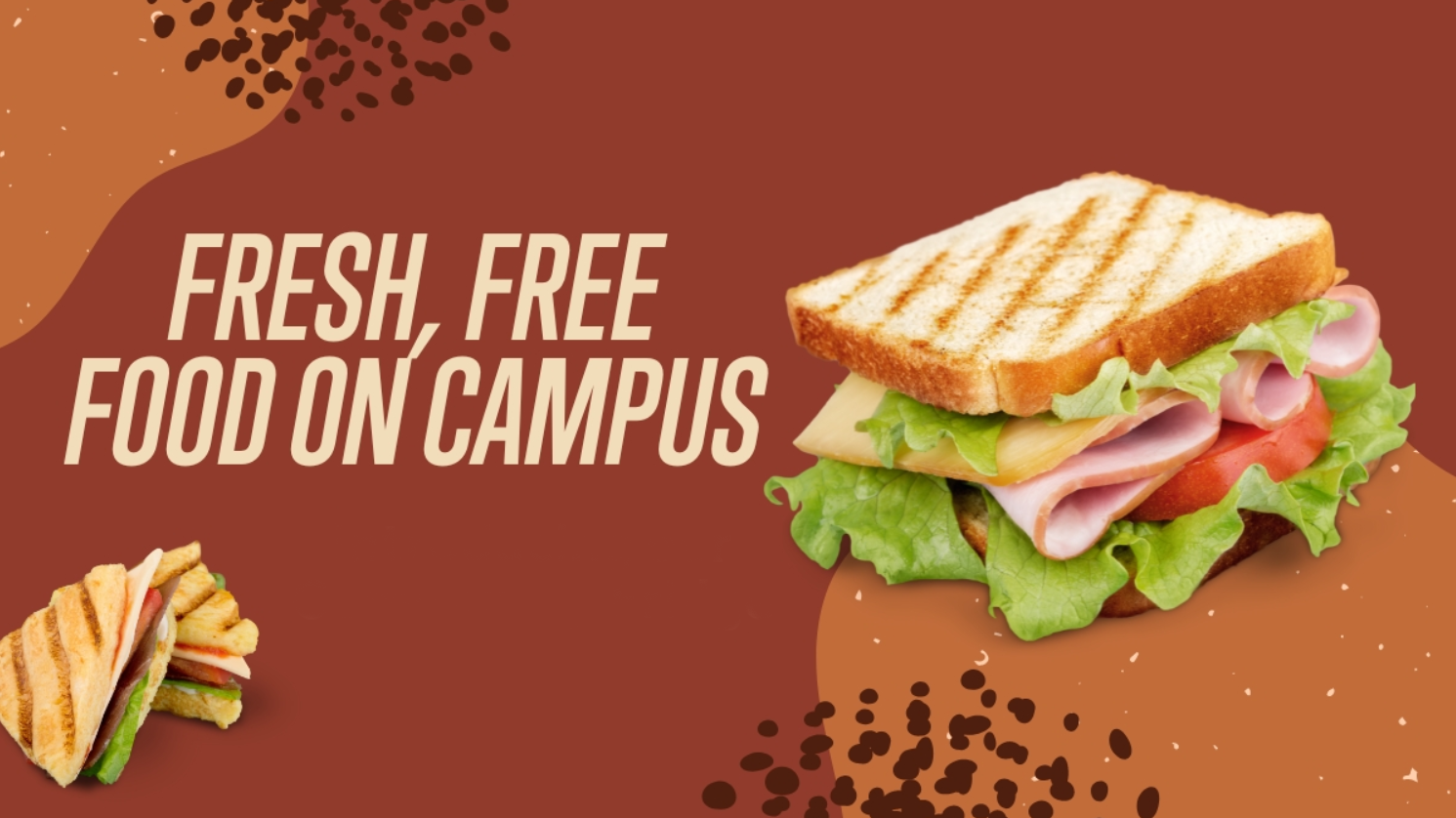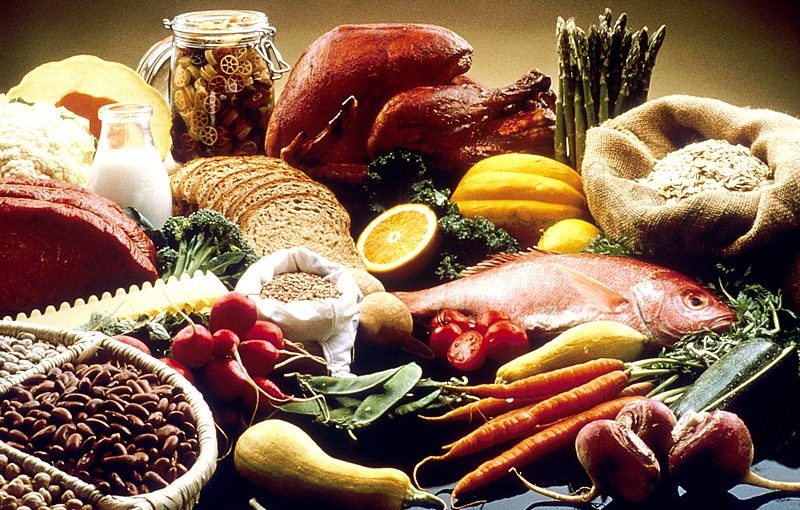Heading into college life comes with its own challenges, and one that affects students profoundly is eating well on a tight budget. Moments of rummaging through the sofa for spare change or surviving on instant noodles become common tales.
But there’s an often-overlooked aspect of campus life that can ease this strain: free food resources available for those in need.
Millions face hunger amidst their studies, yet help is at hand – Penn State, among other institutions, extends various services, including access to nourishing meals at no cost.
In this blog post, we dive into how you can navigate these resources effectively, ensuring your focus remains sharp on academics rather than an empty stomach. Get ready to turn your mealtime worries into a tale of the past!
Key Takeaways
- Students can get free or cheap food at school. They can use meal programs, local food banks, and summer meal plans.
- Schools in some places like New York City offer free breakfast and lunch to all students.
- There are special apps help find free food from markets and shops.
- Mystery dining lets students eat for free at restaurants if they give feedback about the food and service.
- Events on college campuses often have free snacks, so going there is a good way to find something to eat.
Why is Access to Free Food Important for Students?

Access to free food is crucial for students as it not only addresses the immediate need for nutrition but also significantly impacts their academic performance. It helps alleviate food insecurity, ensuring that students can focus on their studies without the distraction of hunger.
Additionally, providing free food for students addresses larger societal issues related to hunger and poverty, promoting equity and opportunity for all individuals in the community.
Benefits of free food for students
Free food at school helps students save money and stay healthy. Kids can focus on their studies instead of being hungry. When schools give out free meals, they ensure every student gets the chance to eat well, no matter what their family earns.
This means children get the energy they need to grow and learn better in class. Free or reduced-price lunches lower kids’ risk of being overweight or sick because they eat nutritious food.
Eating good food at school can help students do better on tests and stay active in sports. Plus, when kids share meals, it brings them closer as friends and makes everyone feel like part of a group.
Now, let’s explore what kinds of free food programs schools have for students!
Impact of food insecurity on academic performance
Food insecurity hits students hard in their studies. When you don’t get enough food, your brain can’t work as well as it should. College kids who often worry about where their next meal will come from may have trouble focusing in class and even sleep poorly at night.
This might make it harder for them to keep up with homework and exams.
Having trouble getting food also makes college take longer for some students. They might stop attending classes or even drop out because they can’t study well when hungry.
Eating good meals helps the brain stay sharp, which is key to doing great in school and finishing on time. Students need access to nutritious food so their academic performance doesn’t suffer.
Addressing societal issues of hunger
Hunger on campus is a big problem. Many students do not have enough good food to eat. This can make them feel bad and alone. Giving free meals helps fix this big issue. It ensures students have what they need to stay healthy and learn well.
Free food programs bring people together. They show that no student should feel shame for needing help with hunger. These programs also teach everyone about helping neighbors in need.
Students often save money when they get free food from these programs. Next, look at campus resources where students can find free meals and snacks.
Campus Resources for Free Food

Campus resources for free food are essential for students facing food insecurity. From school-year meal programs to local food banks, numerous options are available to ensure students can access nutritious meals.
Additionally, programs like the USDA Summer Meals for Kids and school food pantry initiatives provide valuable assistance in addressing hunger on campus.
School-year meal programs
Accessing school-year meal programs is a great way for students to save money and ensure access to nutritious meals. Here are some ways these programs can help students:
- Free or Reduced-Price Meals: School meal programs offer free or reduced-price meals, providing essential resources for needy students.
- Improved Health and Academic Performance: Access to school meals improves student health attendance, reduces disciplinary infractions, and increases test scores.
- National School Lunch Program (NSLP): NSLP provides low-cost or free lunches to children in nearly 100,000 public and nonprofit schools, ensuring a steady source of nutritious food for students.
- Expanded Access: The USDA is working to expand access to school breakfast and lunch programs, which can increase revenues and help offer healthier meals.
- New York City’s Initiative: The New York City Department of Education offers free breakfast, lunch, and after-school meals to all NYC public school students during the school year, supporting students’ nutritional needs.
Local food banks
As we explore campus resources for free food, local food banks play a crucial role in helping students save money. These organizations provide essential support to individuals facing food insecurity. Here are detailed options to consider when it comes to utilizing local food banks:
- Feeding America Network Food Banks: These regional entities are dedicated to addressing hunger and providing nutritional assistance to college students and their families.
- Community Assistance Programs: Local communities often operate food assistance programs that offer various distributions on specific days and times throughout the week.
- Non-Profit Organizations: Many non-profit organizations collaborate with local food banks to provide groceries, including fresh produce, dairy products, and other essential items for those in need.
- State and Federal Programs: Local food banks can access government initiatives like SNAP (Supplemental Nutrition Assistance Program) and TANF (Temporary Assistance for Needy Families), offering additional support for eligible individuals.
- Financial Counseling Services: Some local food banks partner with financial counseling services to guide budgeting and managing expenses effectively.
USDA Summer Meals for Kids program

The USDA Summer Meals for Kids program provides free, healthy meals and snacks to children and teens at summer sites in low-income areas. The program serves primarily in the summer months through eligible organizations. Approved sites across the country offer no-cost meals to kids up to age 18, creating a safe environment for them. The USDA has extended free meals through the summer and fall months, allowing program operators to continue serving free meals to all children.
- No – Cost Healthy Meals and Snacks
- Summer Sites in Low-income Areas
- Eligible Organizations Serving Primarily in Summer Months
- Approved Sites Providing No – Cost Meals to Kids up to Age 18
- Safe Environment for Children and Youth
School food pantry program
School food pantry programs are a helpful resource for students needing free food access. Here are the points you must know:
- Many colleges and universities nationwide have set up food pantries to help students facing food insecurity.
- The California Department of Education provides valuable information about the benefits, operations, policies, resources, and training related to school food pantry programs.
- A study at Texas Woman’s University (TWU) delved into the barriers students encounter when accessing on-campus food pantries.
- The Dean of Students Office at a college campus offers an Eagle Essentials Food Pantry as a resource for students, faculty, and staff needing food assistance.
Community Eligibility Provision
Regarding accessing free food resources on campus, the Community Eligibility Provision (CEP) is an important federal option for high-poverty schools. This provision allows eligible schools to offer free meals to all enrolled students without collecting household applications. Here are the main aspects of the Community Eligibility Provision:
- Universal Free Meals: CEP allows high-poverty schools to provide universal free meals through USDA meal programs, ensuring that all enrolled students receive nutritious meals without any charge.
- Non-Pricing Meal Service Option: It is a non-pricing meal service option for schools and school districts in low-income areas, aiming to reduce the financial burden on families and ensure access to essential nutrition for students.
- Simplified Application Process: CEP eliminates the need to collect household applications, streamlining the process for schools and families while ensuring that all enrolled students benefit from free meals.
- Federal Support: The provision offers information on reimbursement rates, application processes, identified student percentages, and no-cost meals, supported by federal guidelines to address food insecurity among students in high-need communities.
- Addressing Food Insecurity: By offering breakfast and lunch at no charge to all students, CEP is crucial in addressing food insecurity within vulnerable student populations and promoting academic success through proper nutrition.
- Societal Impact: Additionally, CEP supports the wider societal goal of addressing hunger-related issues among school children and reducing disparities in access to healthy meals based on economic factors.
- No Stigmatization: CEP helps eliminate any social stigma associated with receiving free meals by providing universal access to nutritious food for all enrolled students in eligible schools.
- Collaborative Efforts: Through community eligibility provisions, schools collaborate with federal programs and initiatives such as summer meal programs and other local resources to ensure holistic support for student nutrition during periods of school breaks including summer vacations.
The Open Seat Food Pantry
Transitioning from discussing the Community Eligibility Provision, let’s look at The Open Seat Food Pantry at UW Madison. The pantry was established in 2016 by students to support fellow students facing food insecurity. It aims to provide an array of nutritious and easily accessible food sources for those in need.
- Free Produce: The pantry offers a variety of fresh fruits and vegetables to help ensure balanced nutrition for students.
- Dairy and Canned Goods: Students can access free dairy products and canned goods for convenient meal preparation.
- Hygiene Products: Besides food, the pantry supplies essential hygiene products to support overall well-being.
- Growing Demand: The increasing demand for services indicates a prevalent issue of food insecurity among UW-Madison students.
- Associated Students of Madison: Operated under this association, the pantry strives to combat food insecurity on campus through its valuable services.
Creative Ways to Get Free Food as a Student

Are you a student looking for creative ways to save money on food? From utilizing supermarket cashback apps to becoming a mystery diner, you can use plenty of innovative strategies to get free food.
Keep reading to discover these clever techniques and start enjoying delicious meals without breaking the bank!
Utilizing supermarket cashback apps
Supermarket cashback apps can help students save money on groceries and earn cashback on some items. These apps have limitations and may not offer cashback on every item purchased at the supermarket. Green Jinn is a cashback app that primarily focuses on groceries and allows users to try products for free or at a discounted rate.
- Upload your supermarket receipt to the app to receive cashback offers on specific items.
- Scanning barcodes of products listed in the app to check for available cashback offers.
- Exploring various cashback offers, which may vary based on the season, location, or store.
- Access exclusive deals and discounts only available through the app.
- Withdrawing earned cashback once you reach the minimum threshold set by the app.
Becoming a mystery diner
When finding creative ways to get free food as a student, becoming a mystery diner can be an intriguing option. This flexible part-time opportunity allows students to earn free food from restaurants while providing valuable feedback on their dining experience. Here’s how you can become a mystery diner and enjoy complimentary meals:
- Sign Up with an Agency: Start with a reputable mystery dining agency that offers assignments in your area.
- Choose Assignments: Once registered, browse through available assignments and select those that interest you or fit into your schedule.
- Provide Feedback: When visiting the assigned restaurant, pay attention to the overall experience and provide detailed feedback on the service, food quality, and atmosphere.
- Receive Vouchers: Upon completing the assignment and submitting your feedback, you’ll receive a voucher to cover the cost of your meal.
- Flexibility: Enjoy the flexibility of choosing your assignments and earning free meals while gaining valuable insights into the hospitality industry.
- Experiencing New Places: Mystery dining allows you to explore new restaurants and enjoy delicious meals without spending money out of pocket.
- Balancing Act: Remember to fulfill your responsibilities while enjoying complimentary meals by providing honest and constructive feedback for each assignment.
Signing up for restaurant newsletters and apps
- Signing up for restaurant newsletters and apps is a savvy way to access exclusive discounts and promotions.
- Many restaurants and fast-food joints offer free items when you download their app or subscribe to their newsletter, allowing students to enjoy complimentary meals or snacks.
- By registering with these platforms, students can stay informed about limited-time offers, special deals, and loyalty rewards that can help them save money on dining expenses.
- Subscribing to restaurant newsletters and apps also provides the opportunity to receive birthday freebies and other periodic discounts, enhancing the potential for cost-effective dining experiences.
- Students should watch for affiliated links in newsletters or exclusive mobile app coupons almost always available at participating chains, enabling them to enjoy additional savings on their purchases.
Free hot drinks from coffee shops
If you’re a student looking to save money, here are some ways to get free hot drinks from coffee shops:
- Some coffee shops offer free hot drinks in exchange for personal information. You may need to sign up for their loyalty programs or newsletters to receive this offer.
- Many coffee chains have apps that provide rewards, including free beverages, after a certain number of purchases.
- Watch for promotional events or special offers where coffee shops give away free drinks during certain times of the day or week.
- Participate in market research or taste-testing opportunities that some coffee shops organize, which may come with complimentary hot drinks.
- Utilize loyalty punch cards where you can earn a free drink after purchasing a set number of beverages.
- Check if your campus provides free hot drinks at events, study groups, or student union gatherings.
- Consider joining clubs or organizations on campus that may host events with complimentary hot beverages.
- Attend grand openings of new coffee shops in your area, as they often offer free drinks and discounts during their launch period.
Zero-waste apps for finding free food
Zero-waste apps help you find free food nearby. These apps aim to reduce food waste while providing free food options for individuals. Here are some popular zero-waste apps and how they can help you get access to free food:
- “Too Good to Go”: This app connects users with restaurants, bakeries, and cafes that have surplus food at the end of the day, which they sell at a heavily discounted price.
- “OLIO”: This app allows you to share surplus food from your home with others in your local community or discover free food listings posted by neighbors.
- “Karma”: This app offers unsold meals from restaurants, cafes, and grocery stores at a reduced price near closing time.
- “Freegle”: This app allows users to give away or find unwanted items, including leftover food, in their local area.
- “Food For All”: This app offers discounted meals from restaurants nearing closing time to reduce food waste and provide affordable meals for users.
Restaurant and supermarket openings
Connecting the topic of finding free food through zero-waste apps, let’s now explore how restaurant and supermarket openings can be an excellent opportunity for students to get free food. Here are some creative ways that savvy students can take advantage of these events and promotions:
- Promotions and Giveaways: Keep an eye out for grand openings or special events at restaurants and supermarkets, where they often offer free samples or giveaways to attract customers.
- Special Student Offers: Many restaurants and supermarkets offer special discounts or promotions specifically targeted at college students, providing an opportunity to grab a meal or snacks at a reduced price or even for free.
- Free Wi-Fi Hotspots: Restaurants often promote themselves as comfortable study spots with free Wi-Fi, making it convenient for students to enjoy a meal while working on assignments.
- Healthy Menu Options: Some restaurants have started offering healthier menu options, including items tailored toward dietary preferences, such as vegetarian, vegan, gluten-free, or low-calorie meals.
- Time-Efficient Ordering Experiences: The rise of mobile apps for food ordering has made it easier than ever for time-pressed students to grab a quick bite without breaking the bank.
- Discounts and Loyalty Programs: Many establishments offer loyalty programs, which could provide opportunities for earning points towards free meals or receiving birthday vouchers.
- Targeted Events: Special student nights are hosted by businesses where college students can receive discounted meals or participate in events like trivia nights, open mic sessions, or live music performances.
Other Options to Consider for Free Food

– Meeting and networking events on campus often offer free food to attract attendees, so take advantage of these opportunities. Additionally, consider signing up for birthday freebies and discounts at local restaurants or fast-food chains.
Using supermarket coupons, growing your food, and even entering eating competitions can also be creative ways to access free food as a student.
Meeting and networking events
Meeting and networking events can be great opportunities to get free food. Here are some ways to make the most of these events:
- Attend club meetings or organization gatherings that offer complimentary meals or snacks.
- Participate in campus workshops, talk sessions, or seminars that provide free refreshments.
- Volunteer at events, such as fundraisers or community outreach programs, where participants often receive meals.
- Engage with professional development events or career fairs on campus where free food may be offered.
Take advantage of birthday freebies and discounts

Birthdays bring more than well-wishes – they also offer opportunities to snag amazing freebies and discounts from retailers and restaurants. Here are some clever ways to make your special day even sweeter without breaking the bank:
- Sign up for birthday rewards programs at favorite eateries like Denny’s or Starbucks to receive complimentary treats.
- Check out retailer loyalty programs for birthday perks like gift vouchers or free beauty treatments.
- Utilize supermarket coupons tailored for your birthday week to score discounts on grocery items.
- Enjoy free meals or drinks at various restaurants by signing up for their newsletters and apps.
Using supermarket coupons
Saving money through supermarket coupons can significantly help students stretch their budgets. Here are some effective ways to get free food using supermarket coupons:
- Look out for double or triple coupon days at supermarkets to maximize savings.
- Combine manufacturer and store coupons for additional discounts on food items.
- Utilize loyalty programs offered by supermarkets that provide extra savings and exclusive deals for members.
- Keep an eye on clearance sales and use coupons to reduce the cost of food items further.
- Check online coupon websites for printable grocery coupons that can be used in-store.
- Subscribe to the supermarket’s newsletter or app to receive exclusive coupons and promotions directly to your inbox.
- Consider joining rebate apps that offer cashback on grocery purchases when you upload a picture of your receipt.
- Take advantage of catalina coupons printed at the register and used on future purchases at the same store.
- Follow the social media pages of supermarkets for flash sales, limited-time offers, and digital coupons available exclusively to followers.
- Participate in supermarket customer feedback surveys to receive discount codes or free products as a reward for sharing your opinions on shopping experiences.
Growing your food
Using supermarket coupons to save money on groceries is fantastic, but another great way to cut down on food expenses is by growing your food. Not only does this provide fresh and healthy produce, but it also engages you in a rewarding and cost-effective activity. Here are some ways you can start growing your food:
- Start with easy-to-grow plants: Begin with low-maintenance plants like herbs, cherry tomatoes, or salad greens, which require minimal space and effort.
- Utilize small spaces creatively: Even if you live in a small apartment, consider using containers or vertical gardening techniques to grow herbs and vegetables.
- Join a community garden: Community gardens offer shared space for individuals to grow produce, providing access to tools, expertise, and a sense of community.
- Swap seeds and seedlings: Connect with local gardeners to exchange seeds or seedlings for a wider variety of plants without purchasing them.
- Learn about composting: Reduce waste and create nutrient-rich soil for your garden by composting kitchen scraps and yard waste.
- Embrace seasonal planting: Understanding the best times to plant different types of fruits and vegetables can optimize your yield while minimizing costs.
- Consider fruit trees: If space permits, consider planting fruit trees that yield bountiful harvests year after year without significant ongoing investment.
- Preserve excess produce: Learn methods of canning, freezing, or pickling excess fruits and vegetables to ensure nothing goes to waste while creating pantry staples.
- Research local resources: Utilize local agricultural extension programs or gardening clubs for valuable advice about your region’s climate and soil conditions.
- Share with others: Engage in communal sharing of surplus harvests within your neighborhood or donate extras to local food programs.
Entering eating competitions
Regarding creative ways to get free food as a student, entering eating competitions can be an unusual but fun option. Here are some things to consider:
- Look for local eating competitions in your area, such as hot dog or pie-eating contests.
- Check for any entry fees or if there are prizes for winners.
- Be mindful of the health risks and potential discomfort of overeating.
- Consider how participating in such events fits your budget and health goals.
FAQs

1. How can students get free food during summer break?
Through the Summer Food Service Program, students can get free summer meals at meal sites like schools, parks, and community centers.
2. Can students find food on campus all week?
Many school pantries offer free snacks and meals Monday through Friday to ensure kids have enough to eat.
3. Can I call a number for help finding free food programs?
Sure! You can call this hotline at 1-866-348-6479 for federal government site information on where to receive free student meals.
4. What kind of food do students get from these programs?
Kids usually get healthy foods like milk, fruits, cookies, or hot meals from the Kids Cafe or cafeteria.
5. Are there other ways to learn about student food services in my area?
You bet! For metro Atlanta and other areas, you might watch WXIA-TV news or use online resources https://www.fns.usda.gov/cn/summer-food-service-program that lists local service options.
6. Do college kids also have access to these kinds of food services?
Absolutely! College students often visit a childcare center or attend events on campuses involving free food, especially if they’re in foster care or part of the Food Distribution Program on Indian Reservations.

